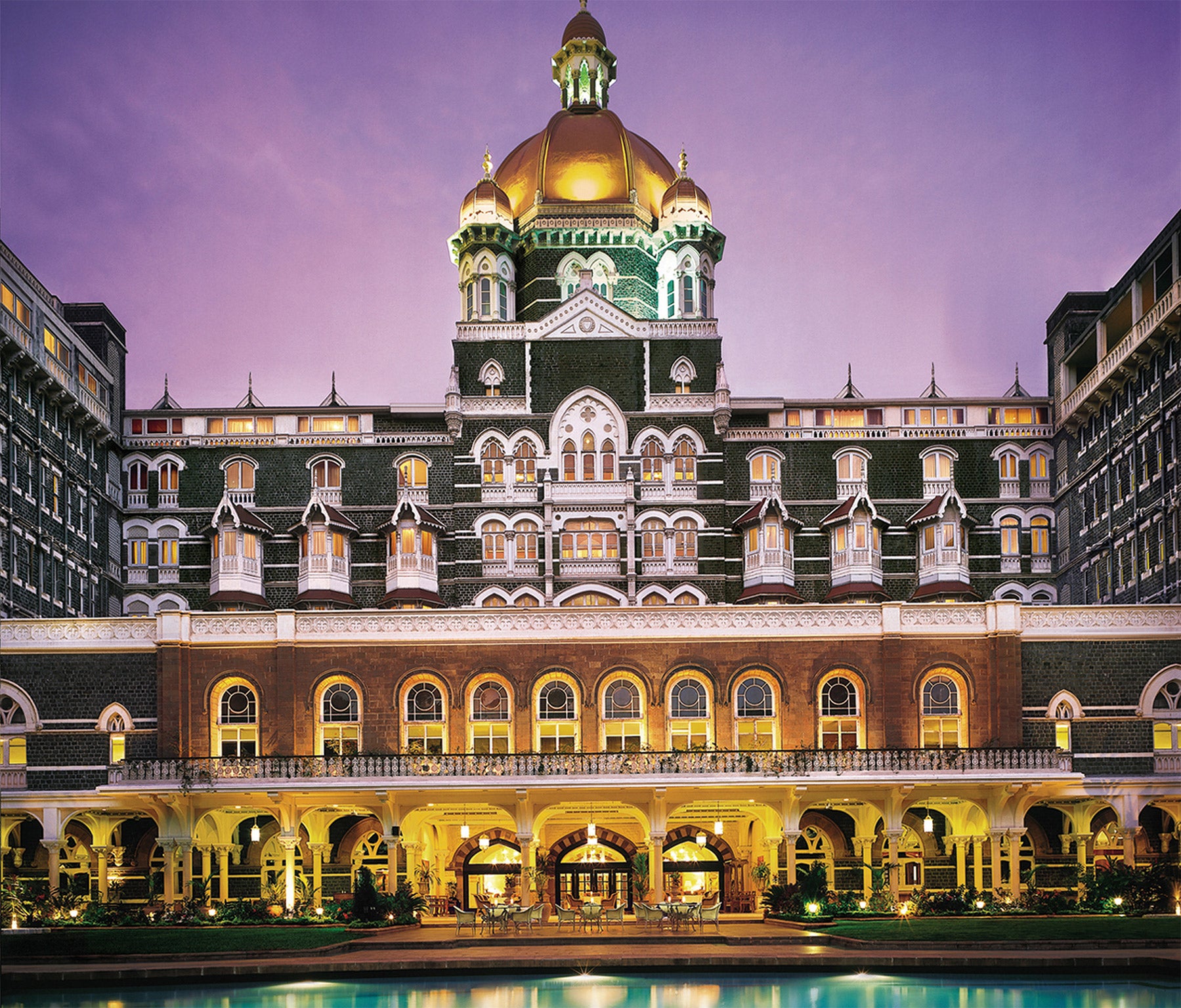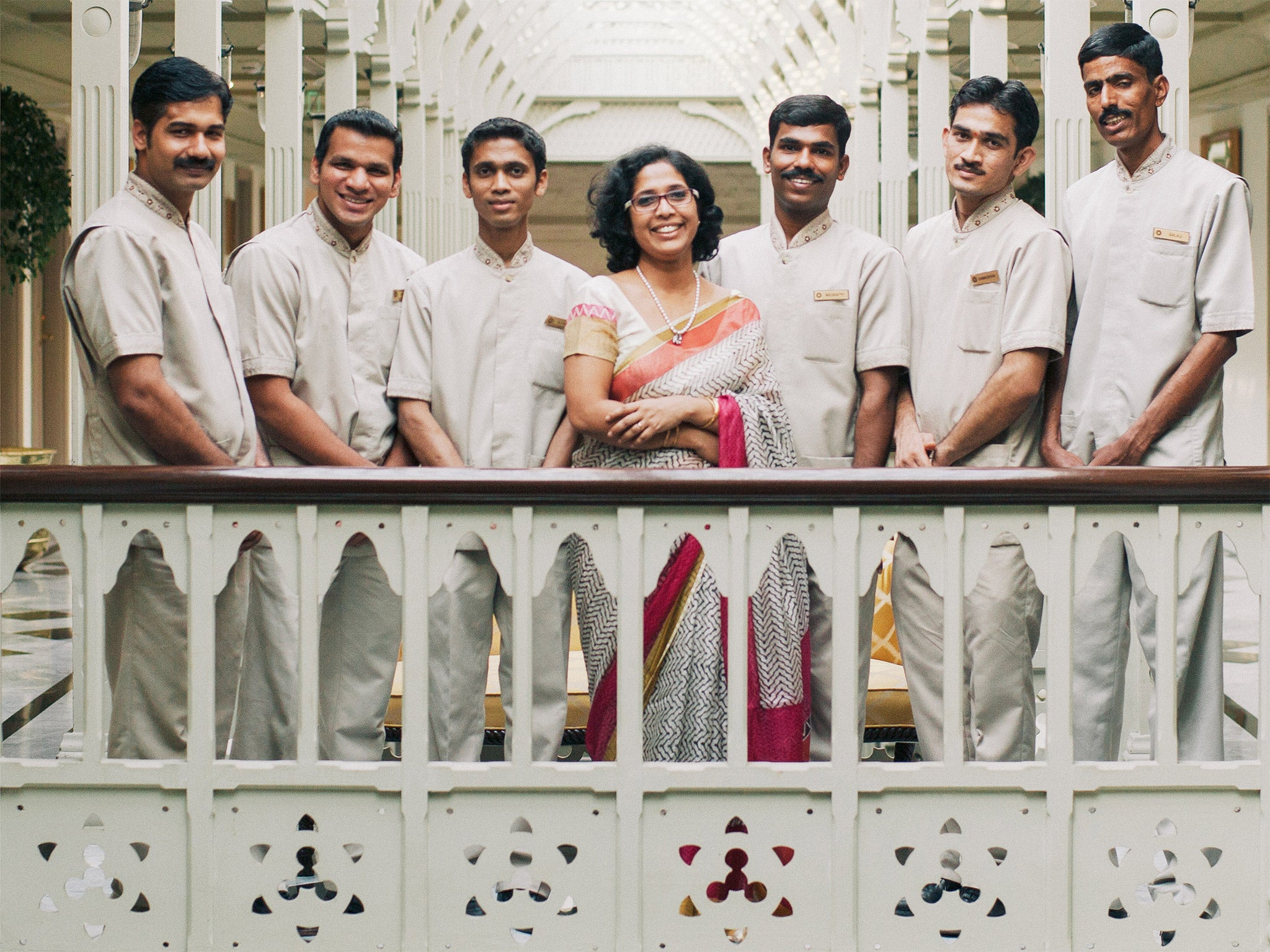The Independent's journalism is supported by our readers. When you purchase through links on our site, we may earn commission.
Hotel India: Mumbai's Taj Mahal Palace leaves its darker days behind
A new BBC series shines a spotlight on the Taj Mahal Palace, and the century-old grande dame is back on sparkling form

Your support helps us to tell the story
From reproductive rights to climate change to Big Tech, The Independent is on the ground when the story is developing. Whether it's investigating the financials of Elon Musk's pro-Trump PAC or producing our latest documentary, 'The A Word', which shines a light on the American women fighting for reproductive rights, we know how important it is to parse out the facts from the messaging.
At such a critical moment in US history, we need reporters on the ground. Your donation allows us to keep sending journalists to speak to both sides of the story.
The Independent is trusted by Americans across the entire political spectrum. And unlike many other quality news outlets, we choose not to lock Americans out of our reporting and analysis with paywalls. We believe quality journalism should be available to everyone, paid for by those who can afford it.
Your support makes all the difference.By the time I reach the third floor, I am lost in indecision. Should I continue downwards, or retrace my route by three storeys – to savour the descent, and the view, all over again?
The central staircase at the Taj Mahal Palace rather fails at its main job – which is to take guests swiftly between their rooms and the lobby of this vastly elegant hotel. The problem is one of distraction. So beautiful is this ornate curl of steps, and the cathedral of space that it serves, that it is difficult to use it without stopping to admire the scene. It is easily the equal of any noble sweep in, say, the regal confines of Versailles. It may even be superior, imbued with a subtlety no royal residences have ever reached for. It hugs the walls in the way a vine clings to a stake in a sunny pocket of the Champagne region.
Finally, I reach the ground level of a retreat that knows its place in the world – that place being Apollo Bunder, a small harbour area on the Arabian Sea in the southerly Colaba district of Mumbai. It is a salubrious address, and one that makes the Taj Mahal Palace the statement hotel in India’s most populous city – as it has been since it opened in 1903.
Tonight, this institution will be visible via Hotel India – a four-part series that will take BBC2 viewers into the Taj Mahal Palace’s suites and rooms. The makers spent six months on site, filming what, on the surface, is a realm of wealth and privilege. The camera rests on figures such as the Texan oil heiress who spends half her year in the hotel. It also shows the fuss and finesse required of a five-star landmark in a city where the Bollywood film industry exudes a monied glow. Witness the footage that captures the preparations for a society wedding, with its endless guest-list worries – and the scenes which show the build-up to a Christie’s auction of much-desired Indian art. The first episode, meanwhile, uncovers the thousand small checks that have to take place ahead of a VIP guest’s arrival.
This gilded side of the hotel’s life is clear on the afternoon I check in. The West Indies cricket team, freshly beaten by India, are dozing by the courtyard pool, the captain Chris Gayle swamping his sun-lounger with his 6ft4in frame. Hilary Swank and Sharon Stone, in town for an Aids charity event, are somewhere upstairs. Both actresses will presumably make the honours board – a cabinet of photos in a corridor off the reception area – as the hotel is keen to celebrate the A-listers who rest their pretty heads on its plump pillows. They are all here, check-in moments preserved by flashbulb – actors Richard Gere, Michael Douglas, Roger Moore and Alfred Hitchcock; rock stars Mick Jagger and John Lennon; politicans George W. Bush, Hillary Clinton and Barack Obama.

The last two are pertinent. Both the current US president and his possible successor have visited in the past five years – both in response to the dark hours of 2008, when Mumbai was attacked by Pakistani militants. For three days (26-29 November), the hotel came under siege, gunmen running amok in its halls. The carnage left 31 staff and guests dead (fatalities in the city totalled 164). The victims are saluted by a small memorial in the lobby – a quiet tribute that acknowledges the tragedy without dwelling on the trauma.
It is understandable that the hotel wants to move on from this bloody chapter. It has, and did. Parts of the complex reopened within a month; the ground-floor Harbour Bar, which was heavily damaged, inside a year. Pull up a seat now, and you would hardly know what had happened. The bar is an image of urban sophistication, its “From The Harbour Since 1933” cocktail tipping its hat to the end of Prohibition in America with a rich mix of gin, peach liqueur and cranberry juice. And the upper-floor Wasabi is just as chic, a restaurant voted on the San Pellegrino list as one of the top 20 in Asia in 2013. The cuisine is Japanese but the view is utterly Indian, the windows gazing on to the twinkling lights of the metropolis.
All very intoxicating, in other words. And only one side of the tale. The joy of Hotel India is that it also meets some of the 1,500 staff who make the property function. It introduces Mr Chaskar, the loyal soul who has been in charge of the mini-bar service for 42 years. And it follows home some of those who labour for the hotel’s greater good – to houses that are unsurprisingly different, in style and comfort, to the splendid chambers in which they work.
This contrast is even starker outside the hotel. When I take an evening walk along the harbourfront, a stream of super-cars is queuing for the valet parking service, as, adjacent, a chi-chi club plays host to a grand wedding – music blaring from colossal speakers set up by the water. None of the expensively dressed attendees notice the man in rags on the pavement, cooking dinner for his family of six on a charcoal stove.
This is the ugly contradiction of modern India in microcosm. Yet it would be churlish to criticise the hotel for thriving in this context, not least because it is a local success. Unlike other relics of the Raj in Mumbai – the Gateway of India, hewn to mark George V’s tour of the country in 1911; that spectacular 1878 railway temple, the former Victoria (now Chhatrapati Shivaji) Terminus – the Taj Mahal Palace is not a fruit of colonialism. It was built by Indian industrialist Jamsetji Tata. The story that he created his own place to stay after being refused entry to the nearby Watson’s Hotel, though sadly plausible, is probably apocryphal. More likely, he constructed his retreat because he felt that Mumbai lacked a hotel of grace and charm. Over a century on, it is impossible to say that he did not achieve his aim. µ
The four-part series ‘Hotel India’ starts tonight on BBC2 at 8pm
Travel essentials
Getting there
Virgin Atlantic (0844 209 7310; virgin-atlantic.com), British Airways (0844 493 0787; ba.com), Jet Airways (0808 101 1199; jetairways.com) and Air India (0208 745 1005; airindia.com) fly direct to Mumbai from Heathrow.
Staying there
Taj Mahal Palace, Mumbai (00 91 22 6665 3366; tajhotels.com). Double rooms cost from R12,916 (£128), with breakfast.
More information
Join our commenting forum
Join thought-provoking conversations, follow other Independent readers and see their replies
Comments